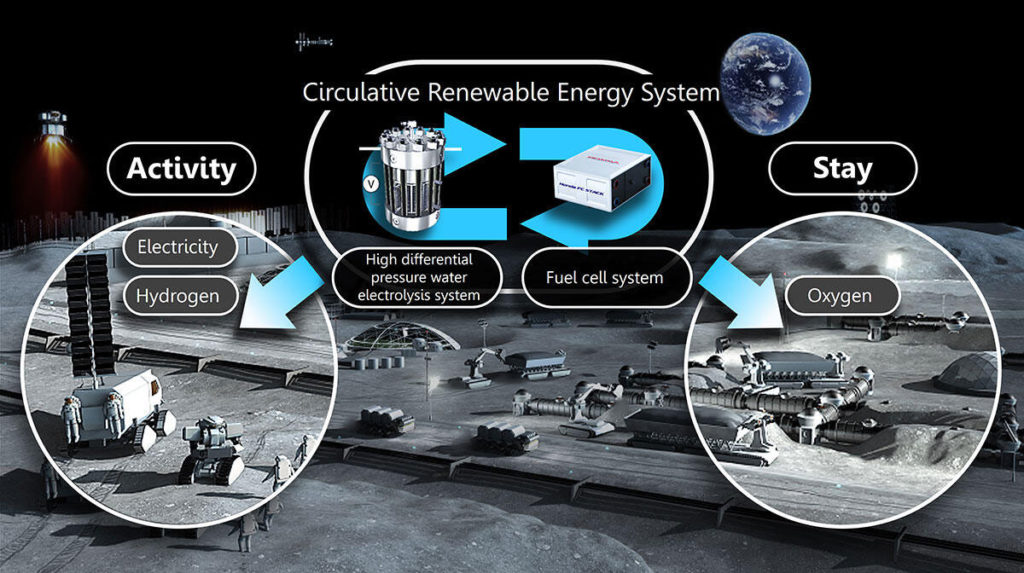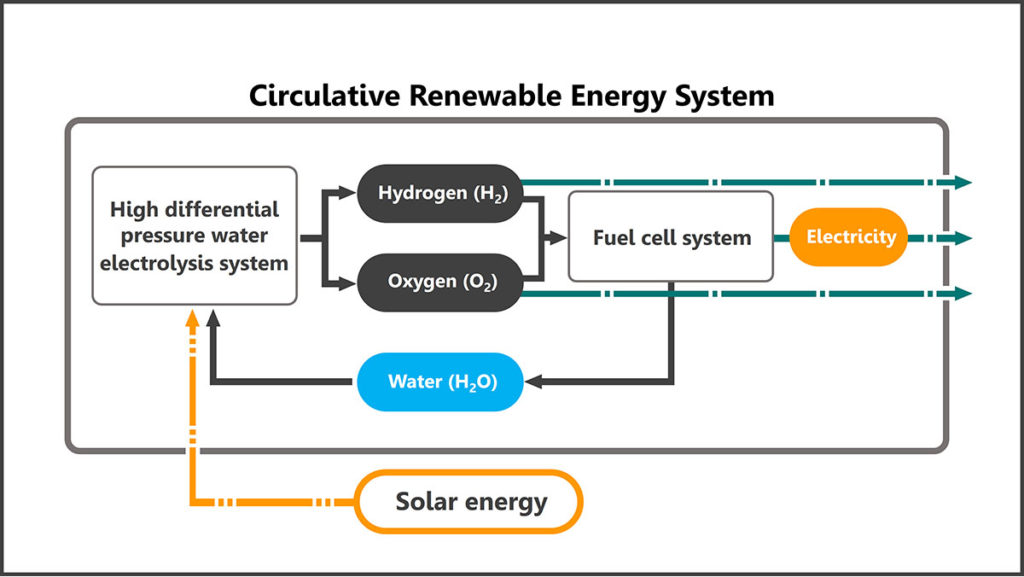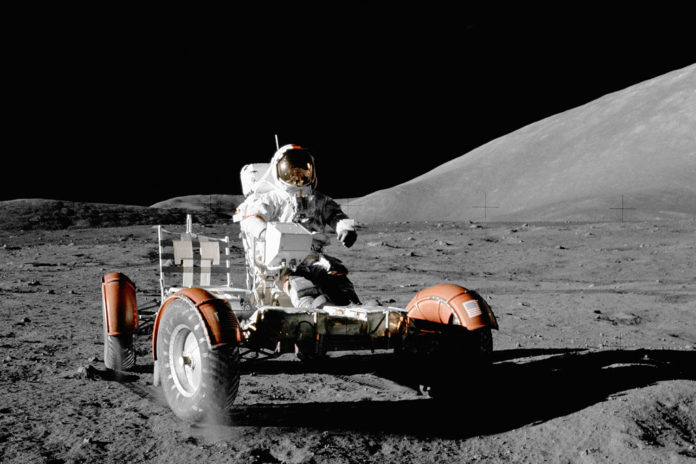The Japan Aerospace Exploration Agency (JAXA) and Honda announced the plan to begin a joint feasibility study on a “circulative renewable energy system” in space that will provide oxygen, hydrogen, and electricity for human outposts and rovers. The project aims to help create an environment in space where people can stay and conduct activities over an extended period of time.
To reduce the reliance on supplies sent from Earth during deep space explorations, the team behind the project is building a system, which combines a high differential pressure water electrolysis system and a fuel cell system. The high differential pressure water electrolysis system produces oxygen and hydrogen using solar energy to electrolyze water, while the fuel cell system generates electricity and water from oxygen and hydrogen.

“Oxygen, hydrogen, and electricity are essential to human activities in space,” said Sasaki Hiroshi, JAXA Vice President. “Realizing a circulative renewable energy system will enable us to obtain these requirements in space without relying on resupply from Earth. This is expected to dramatically expand our activities in space. We would like to make steady progress in this study by leveraging the respective strengths of Honda and JAXA.“
JAXA and Honda signed a three-fiscal year joint research agreement last year in November to pursue research on the circulative renewable energy system for use on the Lunar Orbital Platform-Gateway (Gateway) and on the surface of the Moon, utilizing Honda’s high differential pressure water electrolysis and fuel cell technologies.

The high differential pressure water electrolysis system created by Honda does not require a compressor to compress hydrogen, making it compact and lightweight, and contributes to the reduction of payload capacity and mass, which is a major challenge in space transportation.
During the current fiscal year, JAXA and Honda, utilizing the prototypes, will start the feasibility study addressing the issues on component technologies of the circulative renewable energy system identified by the research conducted during the last fiscal year. Furthermore, the team is planning to reflect the results of this year’s study on the viability evaluation of the whole system in 2022.
